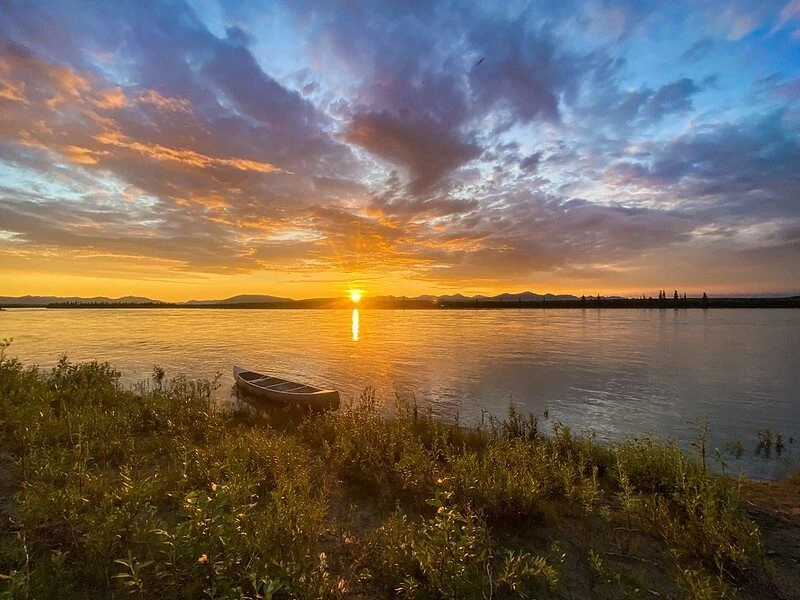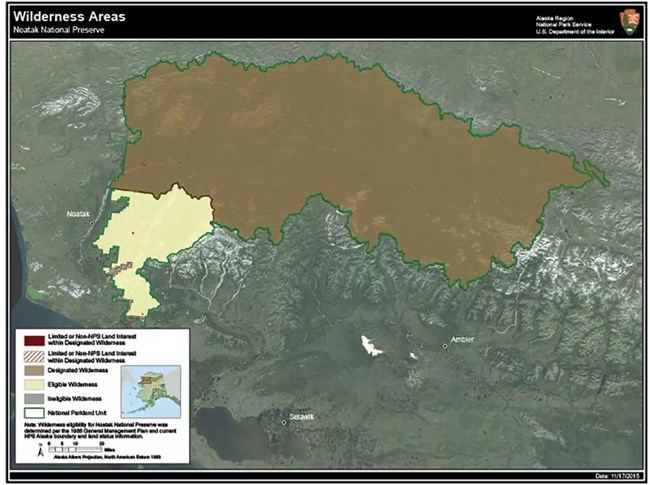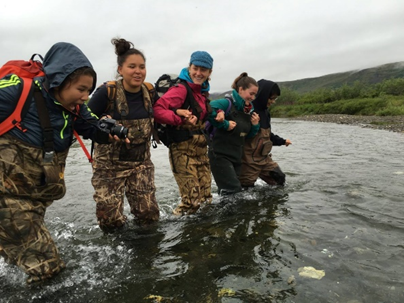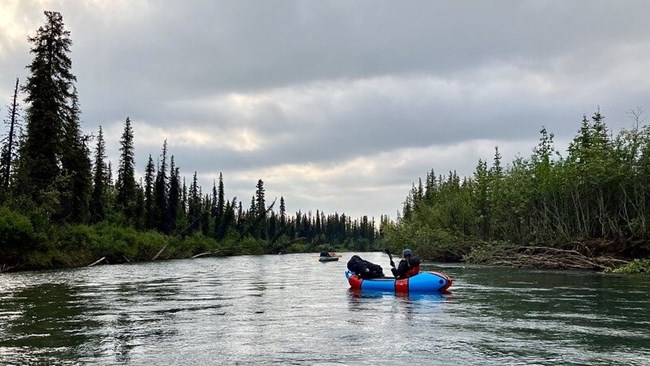
NPS / Emily Creek
The Noatak Wilderness is a tenacious environment. Treading the rim of the Arctic Circle and resting at the edge of the continent, the Noatak Wilderness is encircled by mountains and underlain by permafrost. This landscape is a shifting mosaic of seasons and life. Deep winters envelop the landscape into folds of snow and ice and summers release their energy in a flourish of activity. Wildlife creatively adapts to the dramatic changes in season by hibernating, growing extra fur, or even changing color from summer brown to winter white. Plants find resourceful ways to thrive in this harsh climate, forming as dwarfed ground willows and lupines, and low growing mosses and lichens. From a bird’s eye view, the boreal forest creates a stark demarcation as the landscape transitions to tundra. This expansive landscape extends from the western terminus of the Brooks Range to the headwaters of the Noatak River in the east – over 300 miles of intact landscape. The Noatak River itself has been designated a National Wild and Scenic River. Mountain spines frame the river’s path as it flows to the Chukchi Sea in meandering arcs. In this remote landscape, the Noatak Wilderness serves as an icon of diversity, complexity, and naturalness, and represents an opportunity for subsistence lifeways to live on. 
NPS Map Noatak National Preserve contains 6.7 million-acres in arctic-subarctic Alaska, over 6 million acres of which is designated wilderness. This wilderness designation, among other things, limits development and protects the nations’ largest unaltered river basin and free-flowing wild river. Learn more about wilderness designation in the Noatak Wilderness Character Narrative. 
NPS Wilderness as HomelandThe Iñupiat of Northwest Alaska have lived in and around the Noatak wilderness for tens of thousands of years and their history is embedded in the landscape – depressions of house pits set on riverbanks and caribou hunting lookouts marked by rock cairns atop ridges. Every tributary, mountain top, and even gravel bar has a name and a story that informs subsistence users as they travel. The Iñupiat Ilitqusiat – that which makes us who we are – defines values of humility and respect for nature: values which continue in this landscape where wilderness helps bridge the values and land ethic of Alaska Natives and those of people from around the world.Subsistence is a way of life, a source of sustenance, and remains central to culture, community, and spirituality in the Northwest Arctic. Indigenous knowledge and values guide subsistence hunting practices. Learn more about how subsistence is practiced today, as well as in the past. 
NPS / Ann Carlson Visiting Noatak's WildernessMuch of Noatak National Preserve is undeveloped. The most common way to explore the Noatak Wilderness is along the Noatak River. The Noatak River draws many adventurers to its waters as it provides an unparalleled opportunity to float down a vast and intact ecosystem. Unlike most national parks, there are no roads, facilities, trails, or campgrounds. But it does offer outstanding opportunities to experience a genuine wilderness on its own terms. Please visit our list of licensed operators for trip facilitation, such as air taxi, guided rafting, or hunting. Learn more about Noatak's wilderness... |
Last updated: February 14, 2024
